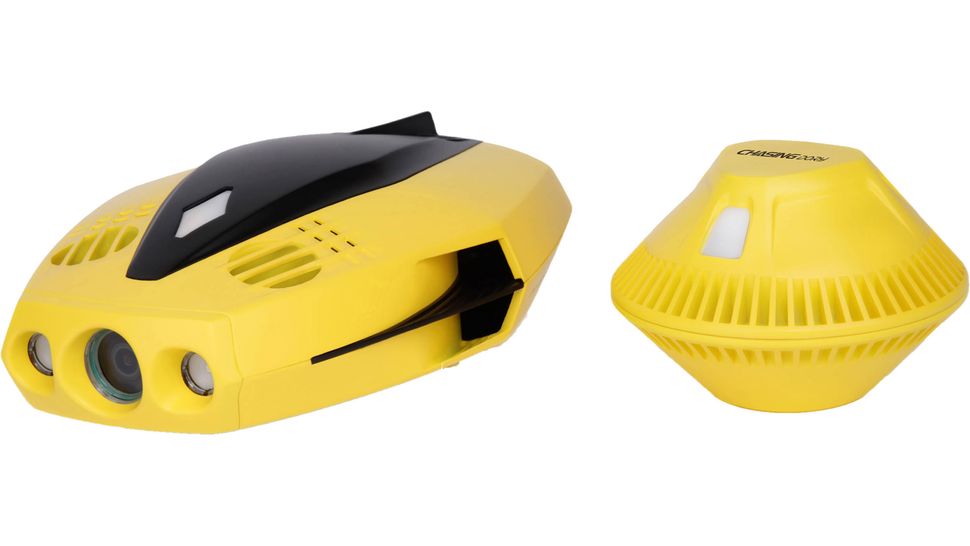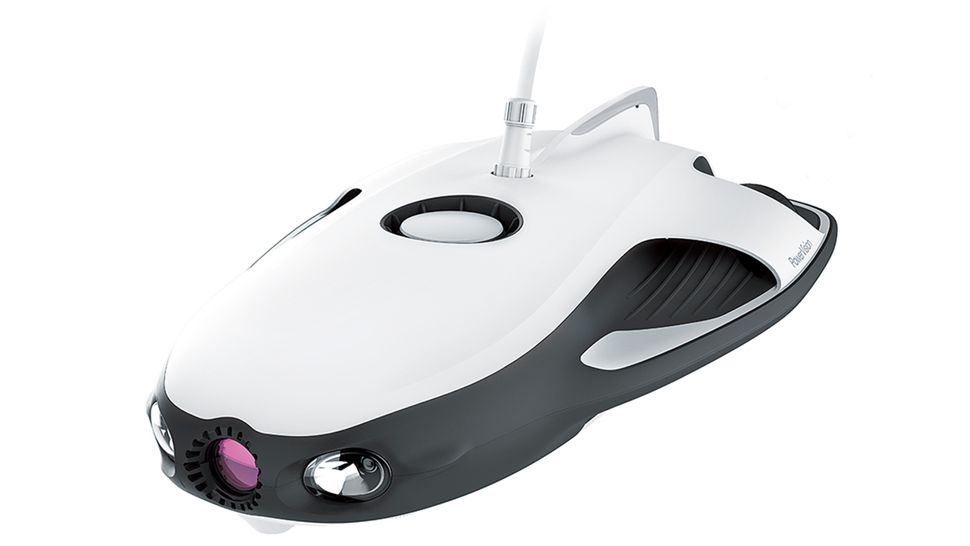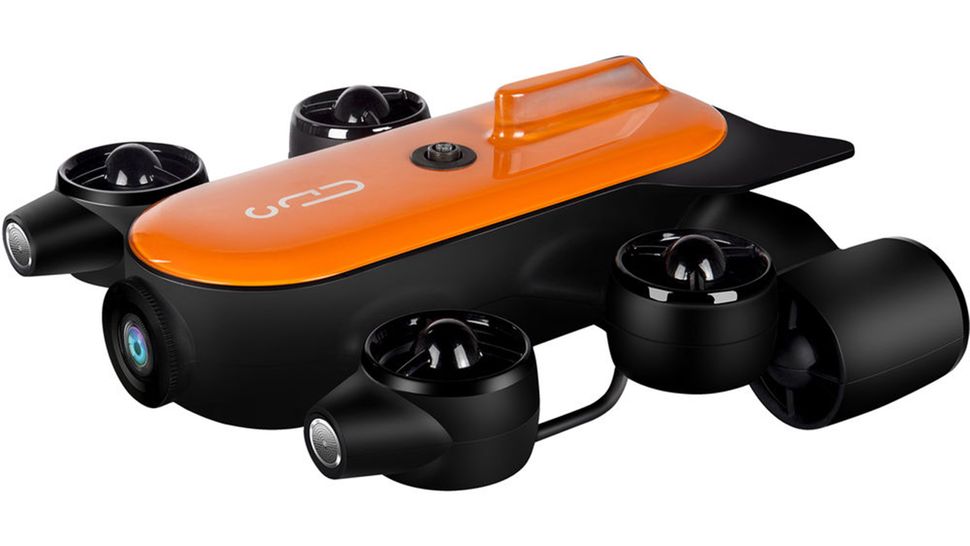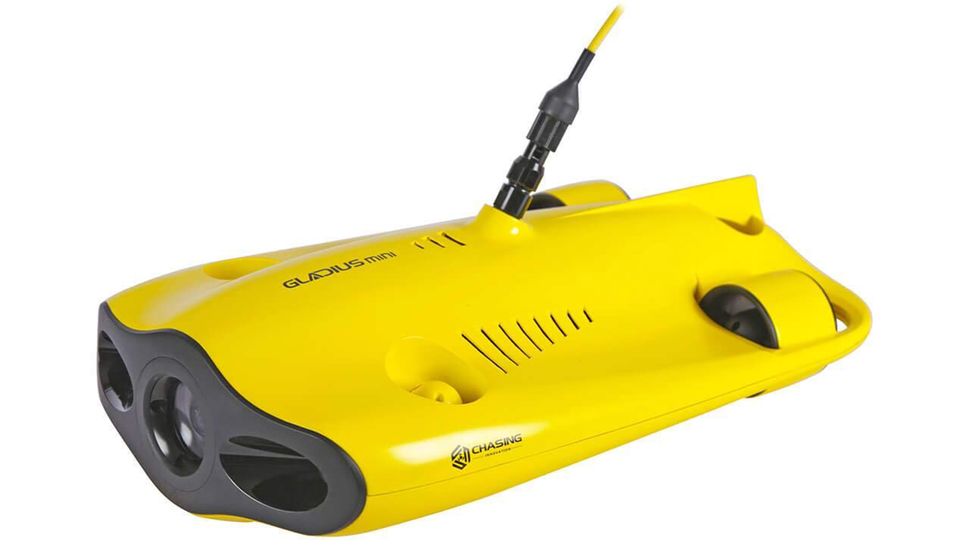Budget Drones
Chasing Innovation Dory
If you're just getting into submersible drones as a novice, a popular option is the Chasing Innovation Dory. This drone is the cheapest drone on the market at $499 and it only weighs 2.5 kg. With a battery life of 1 hour and a max depth of 15m, this ROV moves at a max of 1.5 knots and has a camera that films video in 1080p.
Chasing Innovation Dory ($499)
Chasing F1 Fish Finder
The next drone on the list is the perfect drone for fishers. The Chasing F1 Fish Finder is a 2 kg ROV that provides you with information about the surrounding underwater terrain and the location of fish in the water. With a max depth of 28 meters, they can use this in the ocean and lakes. This drone also comes with a camera that films on 1080p and livestreams at 720p.
Chasing F1 Fish Finder ($699)
Mid-Range Drones
The next few drones are similar in purpose and price range. They include the YouCan Robot BW Space Pro 4K, PowerVision PowerRay Explorer, PowerVision PowerRay Wizard, Chasing Innovation Gladius Mini, NAVATICS MITO, Geneinno Titan ROV, FIFISH, and the OPENROV Trident. The prices of these robots are from $848 - $1699 and I listed them from cheapest to most expensive.YouCan Robot
The YouCan robot is a good photography robot, but it doesn't have much maneuverability.
YouCan Robot BW Space Pro 4K ($880)
PowerVision PowerRay Explorer and Wizard
The PowerVision PowerRay Explorer and Wizard are both sleek looking, maneuverable ROVs that have a 4K video camera and 1080p streaming. The Wizard is more expensive because it comes with a fish finder and a VR headset. All of these ROVs have a 4K video camera and the max depth is around 100m for most of them. The rest of the drones listed above all function similarly to the PowerRay Explorer except they have varying weights, max depths, maneuverability features and more.
PowerVision PowerRay Explorer/Wizard ($899/$999)
Geneinno Titan ROV, Fifish, Navatics Mito, Chasing Innovation Gladius Mini, and OpenROV Trident
For example, the Geneinno Titan ROV can go the deepest out of these robots with a max depth of 150m. The Fifish has attachments like a grabber arm and a VR headset. The Navatics Mito has a powerful LED attachment.
Geneinno Titan ROV

Fifish

Navatics Mito

Chasing Innovation Gladius

OpenROV Trident
ThorRobotics 110ROV
A utility-oriented robot for consideration is the ThorRobotics 110ROV. At $1,878, this robot has most of the common features of the ROVs listed above and it comes with a grabber arm, but it only has a max depth of 30m.
ThorRobotics 110ROV
Nemo and CCROV
Nemo
If you like the ROVs above and you think you’re ready to upgrade maneuverability, features and build-quality, consider the NEMO ($2639) or CCROV ($3299). The Nemo has a battery life of 3 hours.
Nemo
CCROV
The CCROV only lasts one hour, but it is a photography-oriented photography drone and considered among the best. It’s tiny so you can get closer to fish without alarming them and you can maneuver in tight spaces.
CCROV
For Scuba Divers
Biki and Ibubble
The next two robots are designed for scuba divers: the Biki and the Ibubble. The Biki is a small robot shaped like a fish, can be controlled remotely; and it’s designed to follow people. It can follow you on your dives or monitor kids in the pool and with a max depth of 65 feet, among many other functions. This drone cost only $999. The Ibubble costs much more ($4,334) with the primary advantage of camera quality. It can only last for an hour which is half an hour less than the Biki, and it can only dive 60m. t It is just fully autonomous, but otherwise no controller.
Ibubble

Biki
High-End Drones
DTG3 Starter
The last two drones described here are the most advanced (and most expensive). The DTG3 starter ($5,749) is a robot that weighs 8.5 kg and has a max depth of 150m. With a battery life of 8 hours, this ROV can be under for a very long time. Plus, there are attachments like a claw and an LED to improve the functionality.
DTG3 Starter
Blueye
Last, we have the Blueye ($9,878). The major distinction is the max depth of 300 meters (almost 2 tenths of a mile!). It films in 1080p and has a lifespan of 2 hours. This robot also has great maneuverability and can manage currents up to 2 knots. It also has an app so you can choose to control the robot from the controller or using the touchscreen on your phone while watching the feed. The interface on mobile looks like it is straight out of a videogame.
Blueye